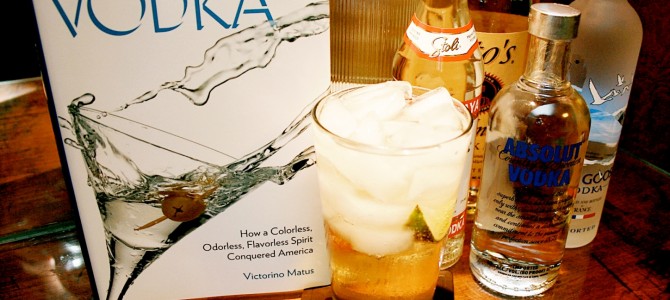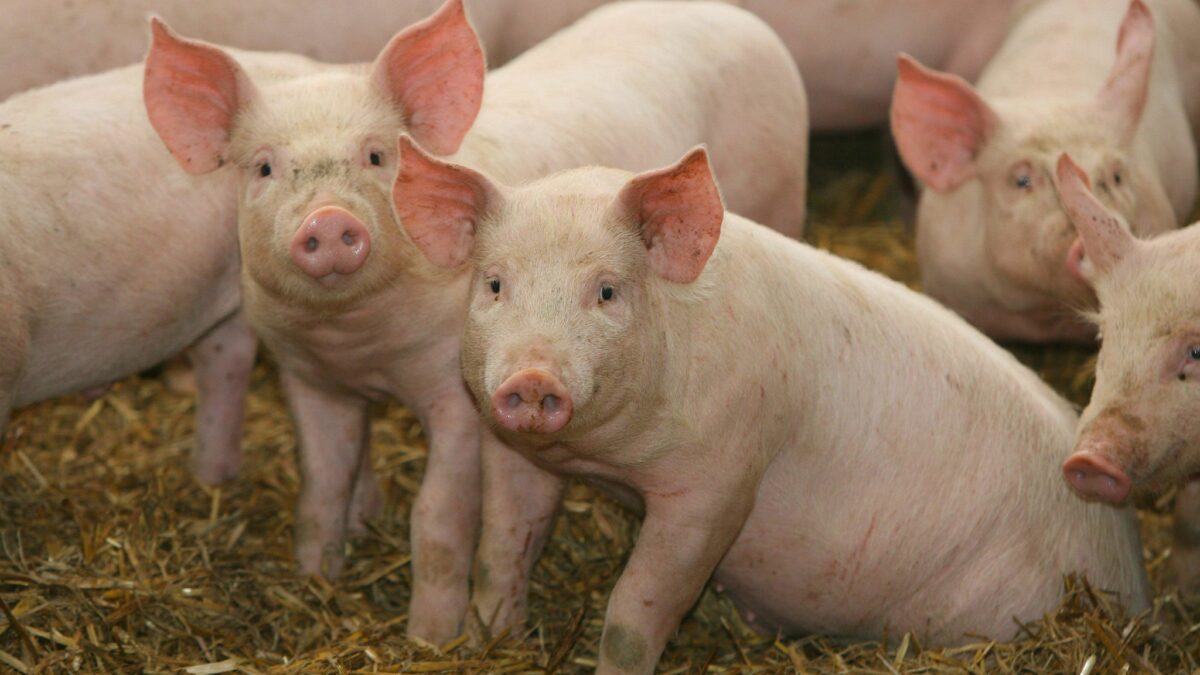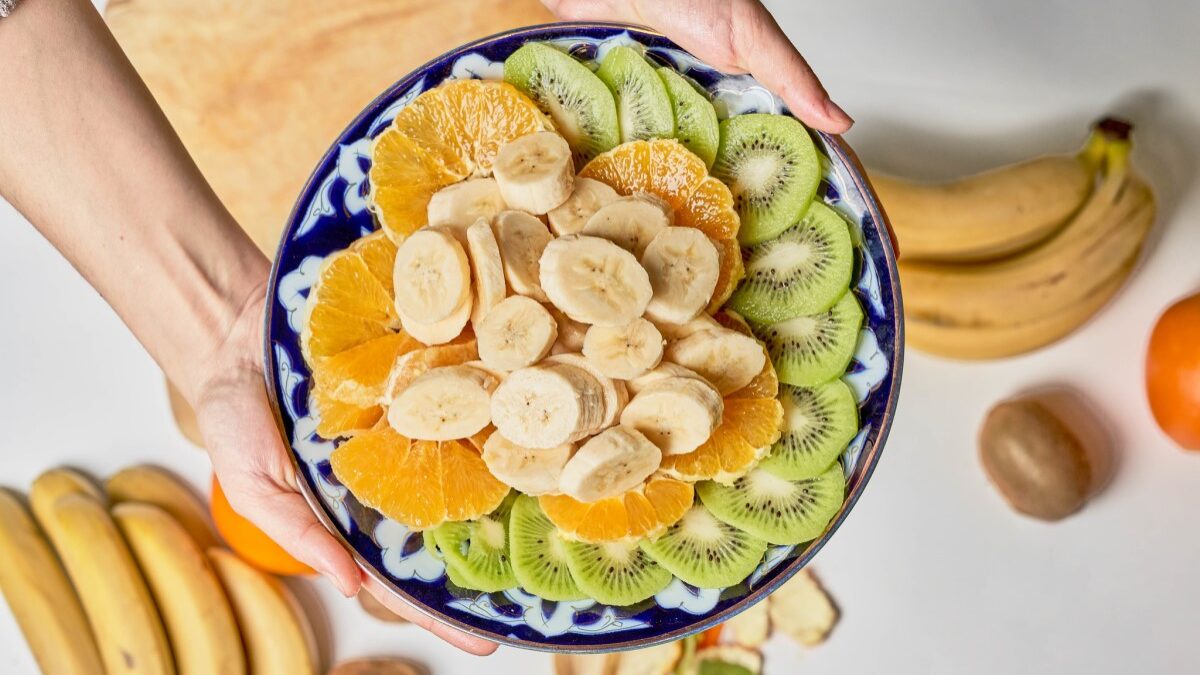
Regular readers of this column may remember that I have confessed to being insufficiently appreciative of vodka. They may also recall that I have embarked on a course of Vodka Appreciation, a concerted effort to remedy this blind spot of mine. Difficult for a bourbon guy, but I’m committed. Lest you think my efforts insincere, consider this something of a progress report.
Vodka has always bored me. Even when I would enjoy the occasional tipple in my misspent youth, it was but a nigh-indetectable means to an end. However, I recently had the distinct pleasure of reading through a new book by Victorino Matus, a senior editor at the Weekly Standard. I think it’s safe to say that a deficiency in my character may well have been remedied.
Vodka: How a Colorless, Odorless, Flavorless Spirit Conquered America, is one part intriguing history lesson, one part reporting, and one part percipient marketing study. Suffusing his book with an easy charm and engaging wit, Matus draws the reader in as he charts vodka’s origins and its rise to become America’s top-selling spirit.
As consumption of alcohol ought to be a social affair, so Vodka is in part a social history. While the invention of vodka can’t be definitively pinned down, the author snappily tracks it from early Arab references to distilled alcohol, then to medieval Russia, where in its earliest form vodka was recommended for strictly topical use rather than ingestion. Along the way to the modern era Matus drops fascinating bits of information – for instance, that Peter the Great would force those who were late to his feasts to take a 1.5 liter penalty shot from a goblet called the “Big Eagle.” He may well have been the absolute worst person in history to drink with.
Later, Russia’s poisonous dependency on vodka manifested as both physical alcoholism and a significant source of tax revenue the state could simply not forego. Various attempts at state control of vodka only increased the pace of a societal decay that even now plagues Russian society. When vodka reached American shores, it was in no way poised to compete with the dominant spirits of whiskey and rum.
Yet over time, things shifted. Through a combination of a changed drinking culture, savvy marketing, and some luck, vodka began its ascent. Thus the stage is set for a series of in-depth interviews with some of the major players in vodka, and a keen study of the market they helped shape.
Here is the real meat of the book. Matus approaches his subjects as a diligent reporter, telling us who they are, how they got there, and trying to answer why they were able to turn humble, unassuming vodka into what it is today: at once the most-imbibed spirit in America and a status symbol.
We learn about the unprecedented success of Grey Goose and its founder – who was also responsible for Jägermeister’s entre to the American gullet. We visit with Dan Aykroyd (yes, that one) and his partners at Crystal Head (they of the skull-shaped bottle) to explore the role of celebrity in vodka’s popularity. He drops in on Tito Beveridge of Tito’s Vodka, one of the small but dedicated craft distillers to make his mark, discussing what goes into the bottle and revealing some of what it means to label a vodka as (x) number of times distilled. Matus makes a study of SKYY, Ketel-One, and Swedish company Absolut, whose gorgeous ads adorned many a dorm room wall once upon a time.
Speaking of visual appeal, the book itself is a delight. Vodka’s clear, uncluttered typeface makes it easy to read for hours at a time, and full-color photos give it a vibrancy to match the prose within. It’s a very handsome tome, perfect for a coffee table or pride of place on a shelf next to the hooch. For the data-heads among us, Matus even throws in a few charts in the appendix.
I truly enjoyed getting acquainted with vodka through this book. It could have been dry as Judge Bork’s Martini (though the Judge would never have used vodka), but Vic Matus has mixed it all together into an engaging, entertaining, informative, accessible, and indispensable resource for anyone – from the distiller, to the professional mixologist, to the home bartender. I give it my strongest recommendation. Whether for yourself or as a gift to the boozehound in your life, you would be well-served to buy a copy of Vodka and soak it in.
After reading the book, I reached out to Matus with a few questions. He was gracious enough to provide some illuminating answers and flesh out some of the ideas in the book, as well as suggest a vodka cocktail for you fine folks to try at home. We even touched on that bane of alcohol snobs everywhere: flavored vodka.
FEDERALIST: Connoisseurs may talk of scotch whisky and bourbon, or even craft gin, but the numbers in your book make it clear: America votes vodka and has since the 1970s. Just how much vodka are we drinking?
VICTORINO MATUS: Last year Americans went through more than 66 million cases of vodka—that comes to more than 157 million gallons. Compare that to the whiskey category (including Scotch, Irish whiskey, American and Canadian whiskey, and bourbon), which combined totaled 53 million cases. The brown spirits category made truly impressive gains last year, but we’re still a vodka nation. I mean, it’s 32 percent of the liquor market—basically one out of every three liquor drinks ordered up at the bar is vodka-based.
FDRLST: My understanding is that historically, this country went in for rum and whiskey. How did vodka take the lead?
VM: Part of the answer is Prohibition. When the ban ended in 1934, you saw a whole new bar crowd—a young group of drinkers that didn’t care at all for flavor or character. They just wanted to get that buzz. Think about it: If you were 18 when Prohibition ended, that means you were 4 when it began. You basically have no drinking knowledge, no speakeasy experience. Suddenly it’s all for the taking.
And vodka just happened to be the perfect delivery system, the most mixable of spirits (by the end of the 1930s you had the Bloody Mary and the Screwdriver). But vodka didn’t really take off until the 1940s and 1950s. That’s when the Moscow Mule was invented, and Smirnoff came up with the clever tagline, “Smirnoff Leaves You Breathless.” The company garnered celebrity endorsements and it became very cool to drink vodka—so that’s the other part of the answer: clever marketing. It also appealed to women who no longer wanted those cloying, overly sugared drinks (Pink Lady) but weren’t ready for whiskey (a drink for burly men, as one bartender told me). Vodka is clean and simple and sophisticated all at the same time.
FDRLST: Why do people choose vodka? Does it say something about what people want from a cocktail that they choose the “colorless, odorless, flavorless spirit?”
VM: It turns out there are a lot of people who don’t like to taste booze in their booze. I bet you enjoy a fine single-malt Speyside, as do I. But there are still many other drinkers who do not—and who prefer not to have it on their breath. Vodka is for them. What does it say about them? A.J. Liebling cynically remarked that “it is the ideal intoxicant for the drinker who wants no reminder of how hurt Mother would be if she knew what he was doing.” I wouldn’t go that far. Hey, some of my best friends are vodka drinkers!
FDRLST: The book goes into fascinating detail about the history of the spirit, and the stories of some of the different vodka brands. In your research, what was the most amusing or surprising thing you uncovered?
VM: It doesn’t really matter how many times a vodka is distilled, so long as it is distilled once at 190 proof before getting watered down to 80 proof. As Bob Nolet of Ketel One observed, if your distillery cannot house a tall column still, and you break it down into six shorter stills, do you claim it’s distilled six times? Some people count each copper plate inside a still as distillation—so now it’s a hundred times distilled?
You’ll notice the big players in vodka (and true craft distillers) don’t play up distillation—they know it’s marketing. Also, a majority of American vodkas originate from ethanol plants in the Midwest. These contract manufacturers can distill the neutral spirit five times, then ship it to you. You run it through your still once and presto! Your vodka is now officially six times distilled and bottled at your facility, without mention of the contract manufacturer. And finally, as one prominent ad exec told me, you can distill anything into vodka, including the chair I’m sitting on. Once you get it to 190 proof, does it matter? And does it matter you got the water from ancient glaciers and filtered it through diamonds. No. A good water filtration system (allowing for reverse osmosis) is all you need. And charcoal filters better than diamonds.
FDRLST: You interviewed several vodka producers in the course of the book, big and small. Do you think the craft distillers have something over the large companies? Do the consumers care, or is it all a matter of marketing?
VM: Just as consumers have been drawn to craft brewing, they are also paying more attention to craft distilling. It’s the idea that more care and attention is being paid at the small artisanal distillery than at the industrial-sized plant. So that gives the small guy an edge (and most of these small guys do craft whiskeys and gins as well—they do vodka because it’s relatively cheap and ships almost immediately). At the same time, the giant distillers have an edge when it comes to budget. They can market (Ketel One ran commercials directed by David O. Russell of “American Hustle” fame). And they can get to more bars in more states than the small guy (and each state and sometimes individual counties require separate liquor licenses). Yes, some consumers care the way they care about locally sourced, farm-to-table food. Others care about the price. I’m a little of both, and SKYY, Tito’s, and Smirnoff all give you bang for your buck.
FDRLST: Will vodka continue to hold onto its market share, or do you think that the interest in pre-Prohibition cocktails (with vanishingly few vodka drinks) will diminish it?
VM: Certainly there’s been a rising interest in the retro cocktails. Imagine 10 years ago if you asked for a Manhattan or an Old Fashioned, let alone a Corpse Reviver #2 or Blood and Sand? People would look at you strangely. Now it’s very fashionable (thanks in part to Don Draper). And along these lines, I’d strongly recommend the history/recipe book “Imbibe!” by David Wondrich, which is an homage to bartender legend Jerry Thomas. All that said, 66 million cases of vodka is hard to beat. And I just don’t think we’ll reach that point where a majority of drinkers out there will seek out the smokiness of a Lagavulin Scotch or fully embrace the botanicals of gin (a lot of folks have bad associations with gin, not to mention tequila).
FDRLST: Do you have a favorite vodka, at the moment?
VM: I have always liked SKYY, which is based in San Francisco but distilled somewhere in Kentucky. After I told Derek Brown, the bartender, that I preferred it, he gave me a blind taste test of four vodkas, and I picked out SKYY as my favorite. I don’t know if I could do that again, but it really did happen. I also liked Tito’s, tasting it neat at room temperature. That says a lot—and I don’t care even that it originates from a contract manufacturer in the Midwest. It tasted good. On rare occasions I tried my friend’s vodka, Americana, based in New Jersey. It had a great flavor to it, despite technically being flavorless. Only problem is it’s hard to find around here. Distribution is killer.
FDRLST: Flavored vodka: abomination, exploitative cash grab, or benign response to the market?
VM: Well, it’s an abomination to some of us, but it’s also a response to the market (though I wouldn’t say “benign”). We sophisticates hate it—how could anyone love vodka flavored like peanut butter and jelly or salmon? And yet, as another drinks writer, Jason Wilson, points out, these companies wouldn’t be making all these flavors if no one was buying them. The flavored vodkas seem to be geared toward women—it’s a massive market segment. Likewise, you’re seeing this with the cherry-flavored bourbon Red Stag or Jack Daniel’s Honey.
FDRLST: Seeing as we’re well into the season, could you share a recipe for your favorite summertime vodka drink?
VM: I used to only drink vodka and club soda with a twist of lime. But if you’ve got ginger beer around, make it a Moscow Mule:
- Fill a glass with ice
- 3 ounces vodka
- Fill the rest of the glass with ginger beer
- Squeeze of lime
- Stir and serve (preferably in a copper mug)
It’s embarrassingly simple, but vodka isn’t meant to be complicated.









